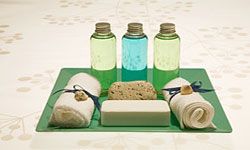Less than 200 years ago, soap was considered a luxury item, and people's bathing habits were infrequent, at best. We've come a long way since then. In fact, frequent washing is now the No. 1 cause of dermatological disease [source: WebMD]. Still, the benefits of washing ourselves far outweigh the drawbacks. Consider this: Regular bathing and hygienic skin care regimens have virtually eradicated humanity's problems with parasites (such as lice), prevented disease, increased our average lifespan and generally improved our standard of living [source: Smith].
Obviously, humanity's hygiene habit is here to stay. The biggest sanitation issue many of us face is finding a decent skin cleansing product among all the superfluous offerings at the local store.
Advertisement
Let's examine the five most popular skin cleansers on the market today. We'll get down and dirty with everything from soap to cleansing cream to make sure you know which product works best for your needs. After all, just because modern skin cleansing habits allow most of us to live relatively hygienic, odorless lives, it doesn't mean that every cleanser is one-size-fits-all.
Head on over to the next page to get the scoop on soap, humanity's oldest skin care product.
